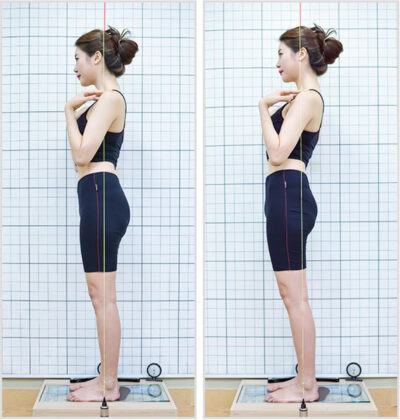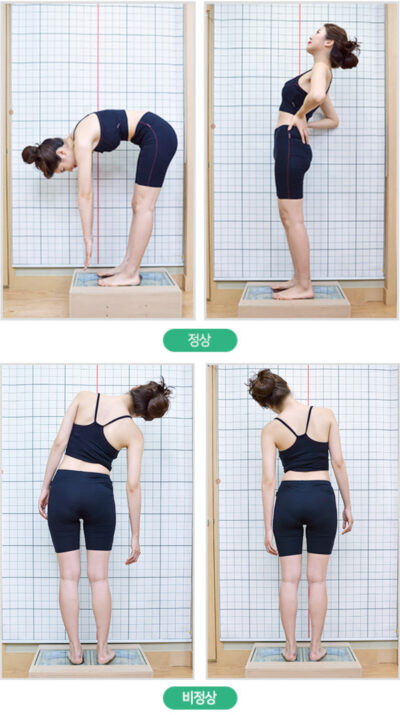Bridging Eastern & Western Medicine
How MBR Practitioners Thoroughly Diagnose & Treat Each Patient
Only at MBR
What is MBR Body Posture & 12 Meridians Analysis Exam?
The 12 meridians that connect the 11 systems of the human body resemble a spider’s web, extending from head to toe. As these meridians are distributed throughout the musculoskeletal system, examining the postures of the limbs, trunk, and craniofacial areas provides a quick and objective means of assessing their balance.
Externally, the 12 meridians are located in the primary and sinew channels of the extremities, trunk, and craniofacial areas, while internally, they are connected to vital organs such as the heart, lungs, liver, kidneys, stomach, large intestine, and small intestine. By analyzing the balance of these meridians through posture and movement examinations, even the imbalance of internal organs can be identified.
The MBR meridian examination system, developed over a long period and based on numerous clinical results, consists of 10 steps and is a critical tool in identifying the root cause of pain, determining treatment prognosis, designing detailed treatment methods, and developing treatment plans.
Step-by-Step
10-step MBR Diagnosis

Posterior View
The posterior posture examination is a crucial part of our posture evaluation process. Through analyzing the positions of each joint from head to toe, our practitioner can identify any joint imbalances and assess the interrelationship of muscles. This examination provides valuable insights into the body’s alignment and helps us determine the focus of the next posture screening.

Foot & Ankle
During the standing posture examination, our doctor assesses the foot and ankle joints, paying close attention to the shape of the foot, the balance between the left and right, and the formation of the foot arch. The foot is a fundamental structure that supports and maintains the weight of the human body. If the feet are out of balance, the spine and pelvis can easily become misaligned again, even after correction. As a result, proper foot alignment is essential to the success of MBR treatments.

Lateral View
During the lateral view posture examination, our doctor can identify the interrelationship between each joint from head to toe. This test enables us to evaluate the strength and weakness of the lower extremity muscles, the anterior and posterior pelvic tilt, as well as the condition of the core muscles, hunched back, and forward head posture.

Flexion & Extension & Side Flexion

Seated Position 1
Sit-up posture screening is the first step of the cervical spine and neck ROM (range of motion) test. By evaluating the flexion, extension, rotation, and lateral flexion of the neck muscles, the doctor can determine whether the problem lies in the upper or lower cervical spine and identify which spinal segment needs to be treated.

Seated Position 2: Upper Extremities
The upper extremity motion examination assesses the movement symmetry of the fingers, wrists, elbows, and shoulders, with particular attention to identifying any asymmetry that could lead to neck and shoulder pain or restricted movement. Asymmetrical movement of the fingers and wrists, in particular, can be a significant cause of discomfort and limitations in mobility.

TMJ Assessment
The axis of TMJ movement is located at the C2 vertebra, making the TMJ an essential lever for the body’s balancing axis. As a result, evaluating the TMJ becomes particularly critical. This evaluation primarily focuses on the opening pathway, ROM, deviations, deflections, and joint noises, such as clicking and crepitus, that may occur during opening.

Supine Position
The supine posture test is used to evaluate the lower extremities and pelvis, with a focus on identifying pelvic issues and kinematic movements that may arise in the lower extremities. It assesses various factors, including the degree of pelvic distortion, the balance between the left and right hips, the movement of the knee joint, and the balance between the left and right ankle joints, all of which are crucial for accurate diagnosis.

Static Palpation
When lying down, using static palpation is a simple method to assess the mobility of the cervical, thoracic, lumbar, and sacrum, enabling the identification of the precise location of incomplete dislocation or pain within the spinal segment.

Prone Position
The prone screening test assesses the symmetry of the pelvic bone and sacrum, movement of the hip joint, and differences in leg length. This examination is crucial in identifying the underlying cause of spinal distortion, and can be further compared to the results of the posterior posture examination for a more comprehensive evaluation
Step-by-Step
MBR Procedure
Reservation
To secure your appointment, make a reservation either by phone or online in advance. If you intend to utilize your insurance plan for the treatment, please ensure that you have verified your insurance coverage with us beforehand.
Fill Out Diagnosis Questionnaire
Prior to your treatment, we will ask you to fill out your personal information and MBR Diagnosis Questionnaire, which has been specifically developed by our team. To ensure a smooth and timely appointment, we recommend arriving 10-15 minutes early for your initial consultation.
Consultation with MBR Acupuncturist
Our Acupuncturist will conduct a comprehensive consultation with you to discuss your level of discomfort, medical history, and any changes in symptoms you may have experienced following treatments at previous clinics.
10-step 12 Meridians Analysis
Our Posture and 12 Meridians Test is a 10-step examination program that has been developed by MBR based on over 20 years of clinical experience. The program is structured to quickly identify the root cause of pain, and through the process, both the cause and reason for the pain can be accurately identified.
Additional Assessments
Depending on the patient’s condition, additional assessments may be necessary after the initial test treatment. In such cases, our doctor may request X-ray, MRI scan, or blood tests to assist in making a comprehensive diagnosis.
Diagnostic treatment
By analyzing the patient’s posture and 12 meridians, our doctor determines the most effective acupuncture points and technique to alleviate pain and performs a diagnostic treatment accordingly. When the diagnosis and acupuncture points are accurate, patients can experience immediate relief, leading to a successful treatment outcome. If the root cause of the pain is related to energy metabolism, our doctor may prescribe MBR herbal medicine to further aid in the healing process.
Treatment Plan
Once all the necessary tests have been completed, our team will develop a customized treatment plan tailored to your specific needs. In most cases, this plan will include 16 treatments, including diagnostic sessions.
Daily Life Guidance & Self-exercise Prescription
As part of our treatment process, we provide daily life guidance to help correct any movements or postures in your daily routine that may contribute to pain. Additionally, in certain cases, we may prescribe self-exercise to help maintain the balance of your 12 meridians.
